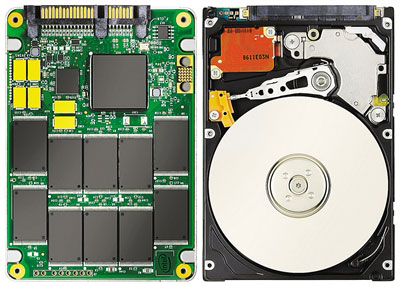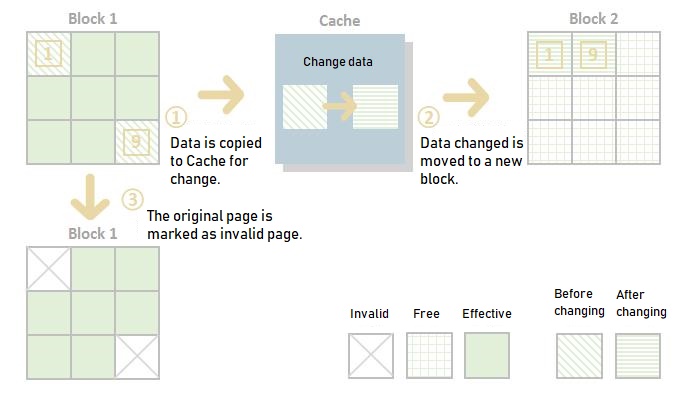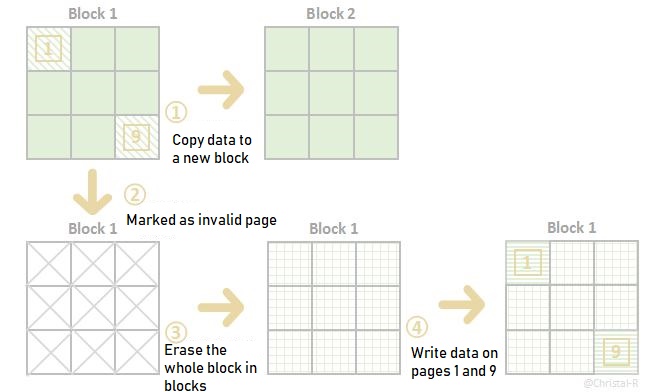Comprehensive understanding of SSD and NAND Flash (1)
Flash Memory, also known as flash, is a non-volatile memory. Non-volatility refers to the fact that data will not be lost after power failure, which involves power failure protection (explained in detail later).
General thought
1. Preface: The comparison between HDD and SSD leads to Flash.
2. Classification of Flash: NAND Flash and NOR Flash.
3. Introduction of NAND Flash rules.
4. SSD Firmware (FW) includes: Mapping Table, Garbage Collection, Wear Leveling (WL), etc.
5. Supplementary concepts: Write Application, Over Provisioning, Flash Life (Program/Erase Count, P/E), etc.
6. Power failure protection mechanism.
7. Evaluation criteria of SSD: stability, performance and life.
1. Preface
(1)HDD
HDD refers to a mechanical hard drive, which is a traditional ordinary hard drive.
Medium: magnetic discs.
Including: disk, magnetic head, disk rotation axis, control motor, magnetic head controller, data adapter, interface and cache.
The maximum speed of mechanical hard drive is about 100MB/s. The solid state drive is introduced due to some reasons such as the ease of heating that can no longer increase its speed.
(2)SSD
SSD: Solid State Drives
Medium: flash particles.
Including: control unit and storage unit (DRAM chip / FLASH chip).
(3) Difference in performance and appearance
HDD looks for data mechanically, so its seismic protection is much lower than SSD, and its data search time is much lower than SSD. The difference between SSD (left) and HDD (right) is as follows:

2. Classification of Flash
Flash is divided into NAND Flash and NOR Flash. NOR Flash is mainly used for storage codes relative to operation, while NAND Flash such as memory cards used in digital cameras is to store date.
Most current SSDs are used to store data that is not easy to lose, so people will choose NAND Flash chip as SSD storage unit. Here we are talking about the NAND Flash chip in SSD.
(1) NOR Flash: Mainly for executing on-chip programs
Advantages: It has good read-write performance and random access performance, so it has been widely used first.
Disadvantage: The single chip has small capacity and slow writing speed, which determines its narrow application range.
(2) NAND Flash: Mainly fory high-capacity storage occasions
Advantages: It has excellent read-write performance, large storage capacity and cost-effective ratio, used widely in the field of large capacity storage.
Disadvantage: It doesn’t have random access performance.
3. Introduction of NAND Flash rules.
(1) Flash does not support overwriting, that is, write operations can only be performed in empty or erased units.
When changing data, the whole page is copied to the cache to modify the corresponding page, and then the changed data is moved to a new page to save, marking the original page as invalid page.

Before specified to write at the location with an existing invalid data, NAND Flash needs to erase the invalid page.

(2) NAND Flash is written in pages and erased in Blocks. Before erasing Blocks, it is necessary to remove the valid pages.
(3) Each block has a limit of erasure times (life span). Too many erasure times will cause bad blocks.
Related Articles:
Introduction of SSD Trim
Write amplification is a critical parameter of SSD
How to exploit IO performance of NAND Flash
Comprehensive understanding of SSD and NAND Flash (2)
